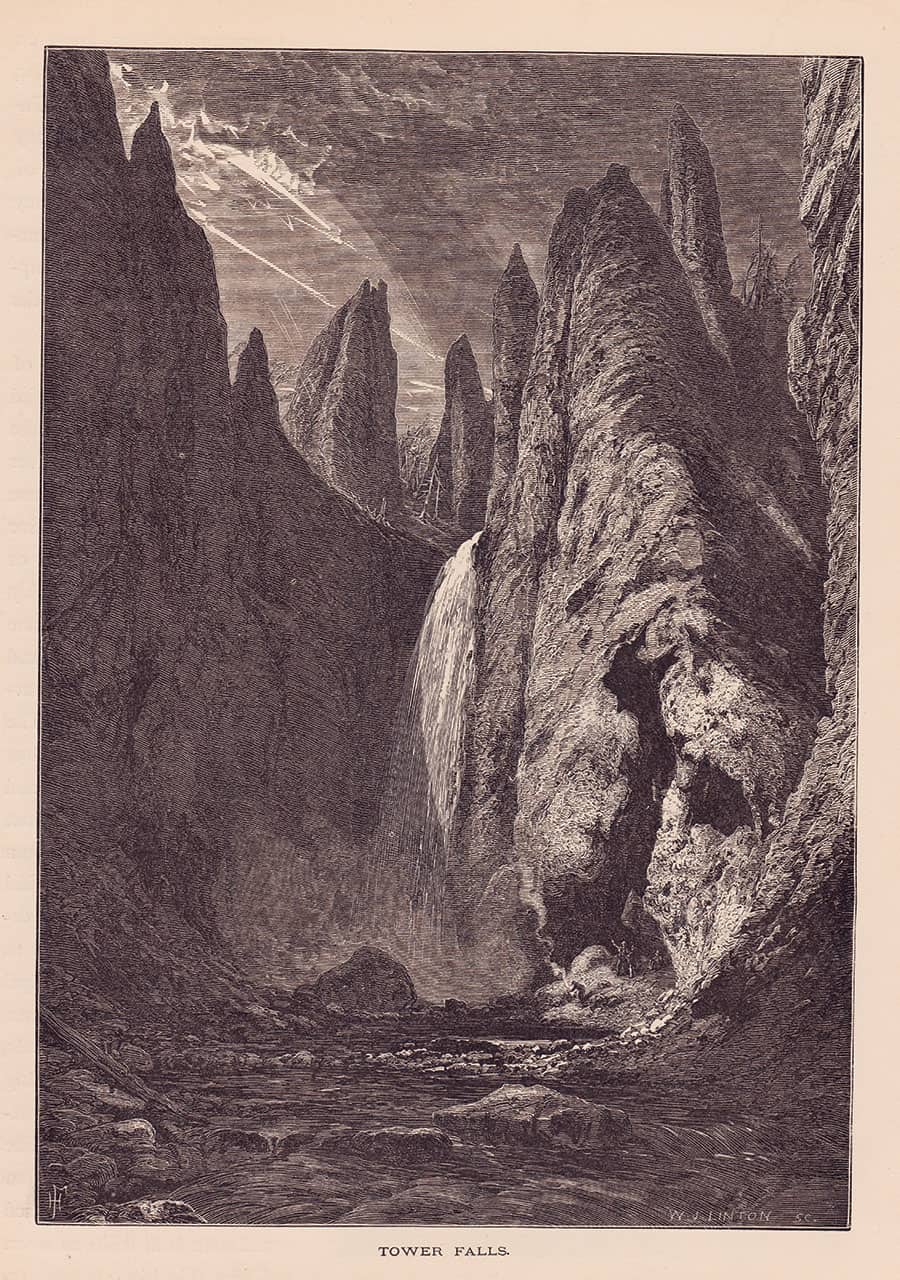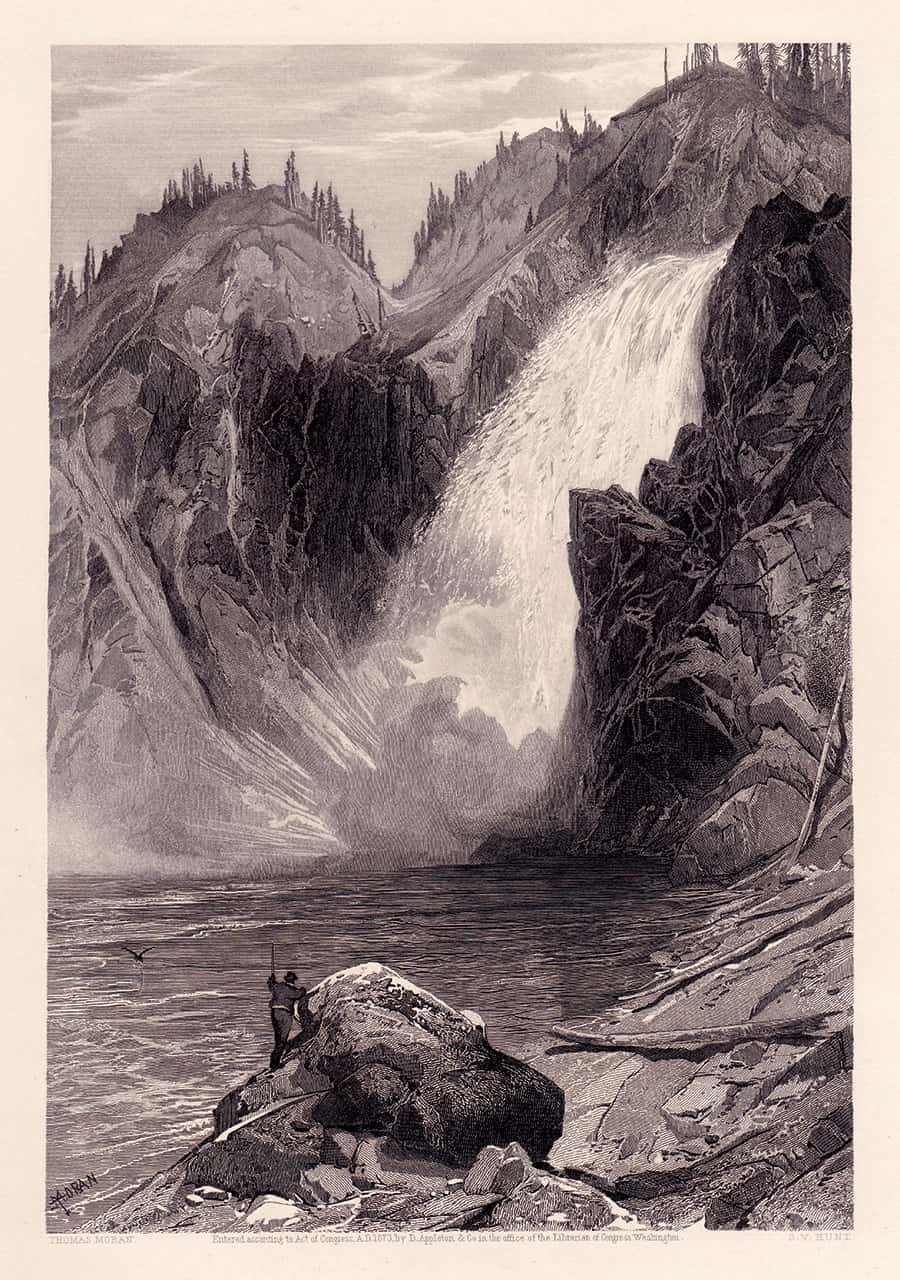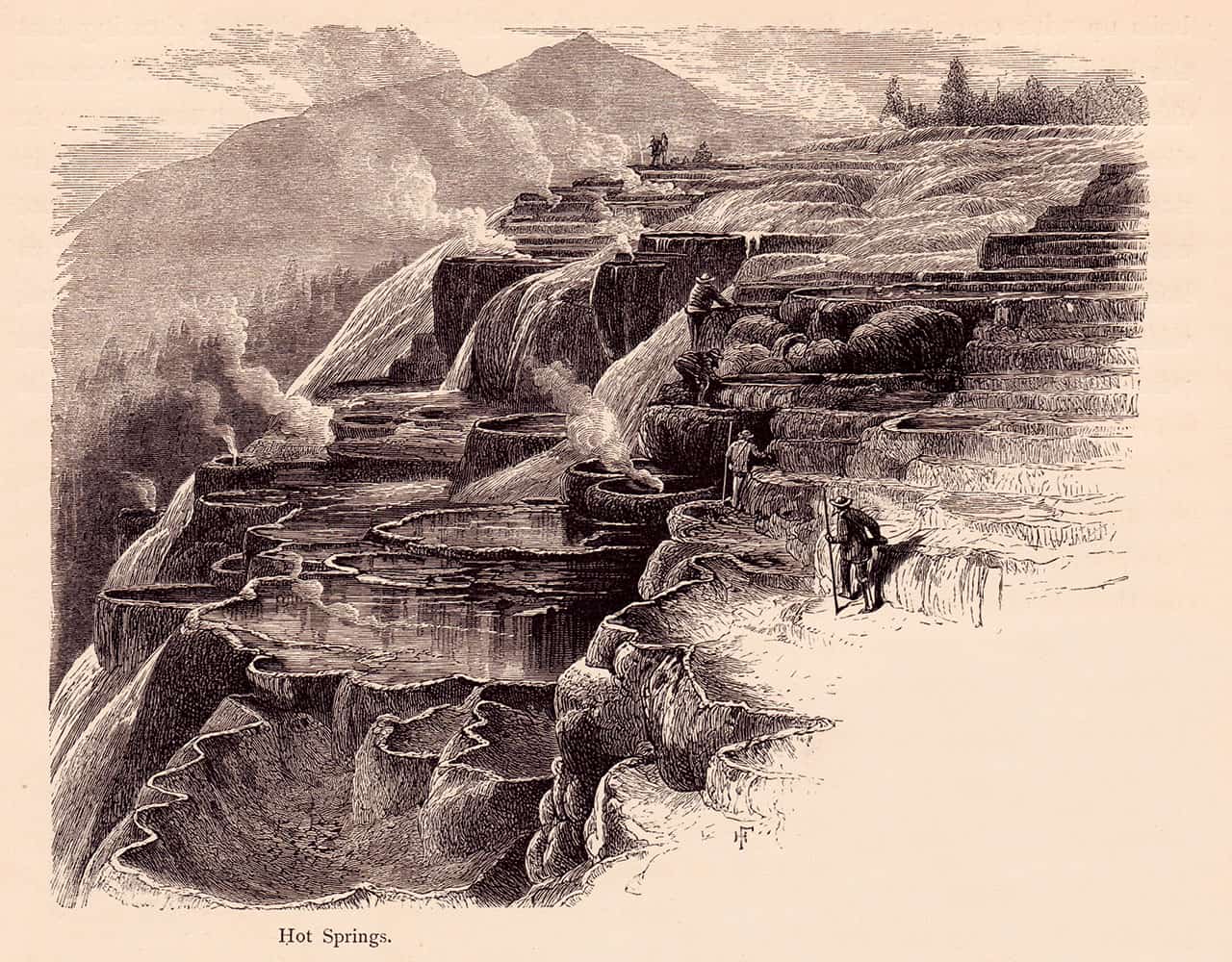Read The
Current Issue
Engraving Yellowstone

Before photos could be reprinted in magazines, artists had to come up with a different way to share the park’s scenery with the masses.
In the summer of 1872, Picturesque America published the article “Our Great National Park.” It was a poetic narrative introducing the country to the wonders of the newly created Yellowstone National Park, established by an act of Congress on March 1 of that year. The article boasted that Yellowstone exhibited “the grand and magnificent in its snow-capped mountains and dark cañons [sic], the picturesque in its splendid water-falls and strangely formed rocks, the beautiful in the sylvan shore of its noble lake, and the phenomenal in its geysers, hot springs, and mountains of sulphur.”
Famed photographer William Henry Jackson thoroughly documented Yellowstone’s iconic landmarks as a member of the 1871 Hayden Geological Survey. A process for reproducing photography—a relatively new medium at the time—in print for mass distribution was virtually nonexistent, though. Artists, including landscape painter Thomas Moran and New York-based illustrator Henry Fenn, had to reproduce Jackson’s Yellowstone photographs in detailed black-and-white drawings. They then had to turn their work over to an engraver.
An artistic medium in and of itself (an engraver’s signature often appeared on a printed illustration alongside that of the artist), engraving involved meticulously carving an image into a flat, smooth piece of wood. Once finished—a single engraving could take weeks—these blocks were inserted into a printing press, pressed in ink, and then, finally, stamped onto paper. We didn’t stamp these engravings onto the following pages, but that doesn’t make them any less artistic.









